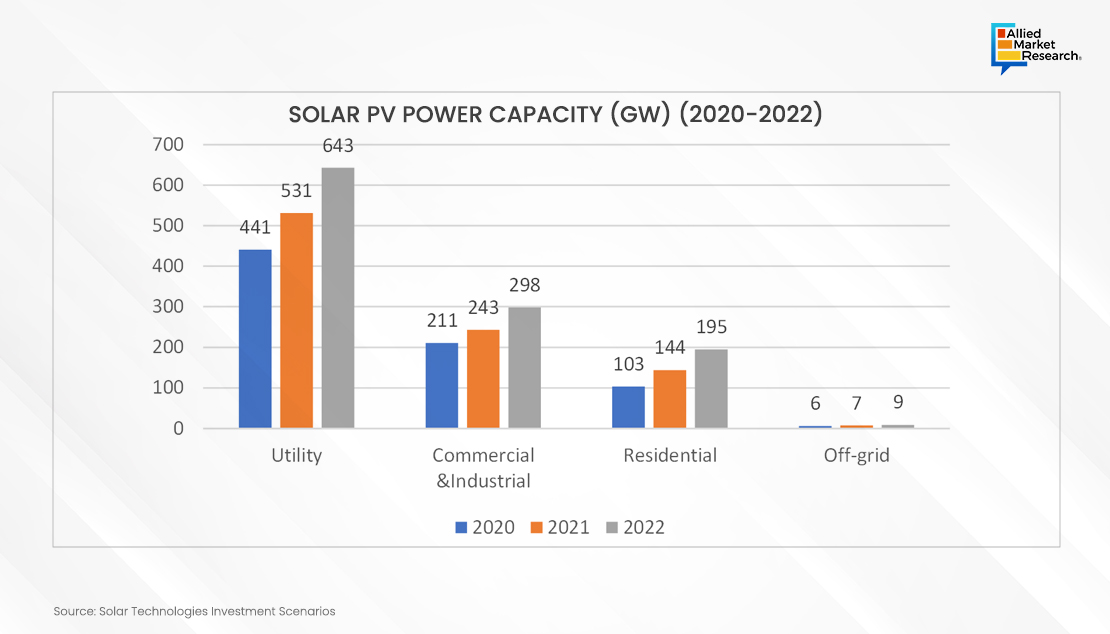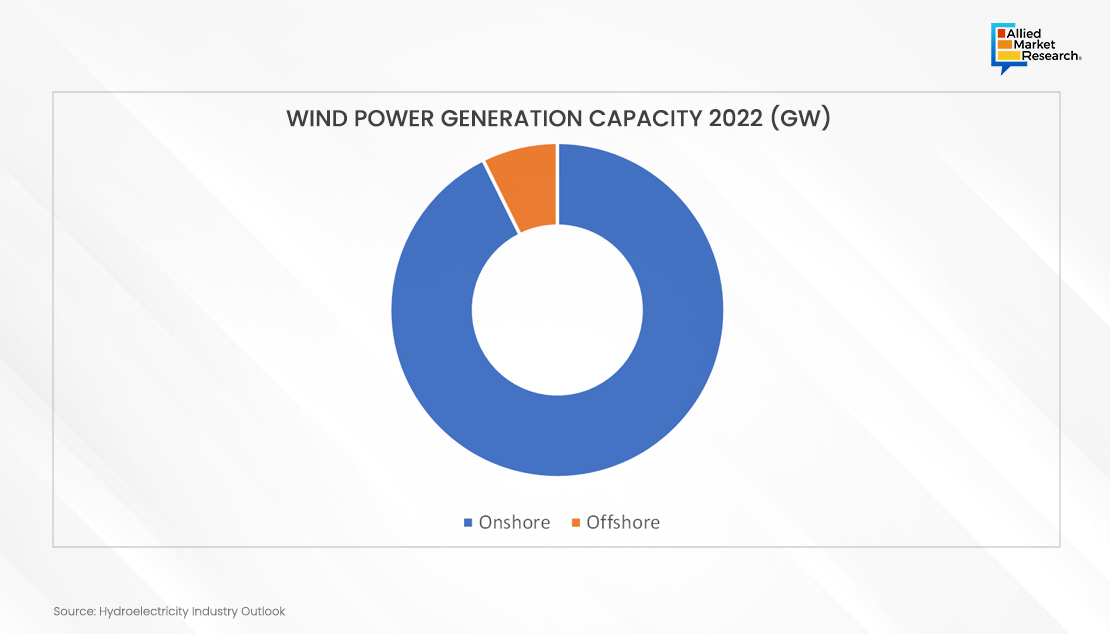Table Of Contents

Yerukola Eswara Prasad

Pooja Parvatkar
Renewable Technologies Shaping the Energy Sector’s Future

Renewable technologies are the sources of energy generation through renewable sources namely solar, wind, hydro, bioenergy, and geothermal. They are the cleanest technology to produce energy and are largely in focus in more than 130 countries across the globe. According to a study by Allied Market Research, the renewable energy market was valued at $881.7 billion in 2020, and is projected to reach $1,977.6 billion by 2030, growing at a CAGR of 8.4% from 2021 to 2030. Many governments, especially those countries leading the carbon emissions due to high industrial activates, are rigorously working towards the renewable energy targets and commitments for 2030. This comes after the Paris agreement where the world is collectively committed to combat climate change and its consequences. To prevent worsening and potentially irreversible effects of climate change, the world’s average temperature should not exceed that of preindustrial times by more than 1.5 degrees Celsius (2.7 degrees Fahrenheit). The recent event of COP28 majorly outlined the progress of the targets set in Paris Agreement of 2015. More than 150 state heads and governments heads participated in the event and took part in several decisions to transition away from coal. Renewables being the most sought out technology to progress the transition in quickest and cleanest way.
There are certain arguments regarding the hydro and biomass sources This comes in light due to the impact of large hydro projects on the surrounding environment & nature’s flow and major feedstock sources for biomass that are deemed more harmful than fossil fuels. Renewable technologies such as solar and wind energy have been part of primary energy sources since a long time, contributing at a very low share. However, there was a sharp rise in the contribution of renewable energy sources, especially wind and solar. The wind energy contributed to 2104.8 terawatt hours (TWh) in 2022, a 13.5% increase from 2021. Similarly for solar there was 24.9% increase in energy generation in 2022 amounting to 1322.6 terawatt hours. For hydroelectricity generation the total generation was 4334.2-terawatt hours in 2022.
Solar Power Industry Outlook
Solar energy is the cleanest form of renewable technology. Solar energy is generated by photovoltaics (PVs) which are based on module technology made from either PV cells or wafers. This technology can be used on roofs for average households and in large areas such as farmlands, open lands, and even on lakes as floating photovoltaics. Solar technology is the least costing option for electricity generation. The photovoltaics used for solar energy generation are made of monocrystalline or polycrystalline cells that convert thermal energy into electricity. In 2022, the electricity generation through solar PVs increased by 270 TWh which is 26% higher than that in 2021. The total contribution in the primary energy mix of solar PVs alone was more than 1300 TWh. It surpassed wind technology for the first time in the history. The majority of this growth was led by China, India, the U.S., and European Union. China leads the growth by adding 100Gw of new solar PV installations in 2022, which is 60% more to that of 2021 for the country and around 38% contribution in total solar generation in world. Similarly, the European Union, India, and Brazil added solar PV by 38GW, 18 GW, and 11 GW respectively.

The above figure illustrates the solar energy capacity between 2020 and 2022. As seen, utilities accounted for the largest share and is poised to grow considerably in the coming years.
The global solar PV manufacturing capacity also increased by 70% reaching 450 GW for polysilicon and 640 GW for modules between 2020 and 2022. Crystalline polysilicon was the dominant technology for PV modules. Several investment announcements from manufactures and industrial policies impacting solar technologies were made in 2022 from the U.S., India (Production Linked Incentive), and the European Union (The Green Deal Industrial Plan) which aim to double the global capacity. Investments in PV capacity additions reached $320 billion in 2022, an increase of 20%. Moreover, solar technology is the only energy source that is in track with 2030 target (Net Zero Emissions) and transitioning towards renewable sources.

Wind Power Industry Outlook
In 2022, wind energy generation reached to 2100 TWh, up by 14% from last year. China added 37 GW of wind capacity followed by European Union at 13 GW and the UK by 3 GW. China contributed around 40% of wind energy generation growth in 2022, followed by the U.S. with 22% and European union by 14%. Of the total wind energy capacity installed, onshore systems were 93% with presence in 115 countries. Moreover, in July 2022, the first floating wind project of 32 MW contract was awarded to Hexicon AB’s TwinHub project by the UK government. For wind power components such as nacelles, towers, and blades, the manufacturing capacity remained unchanged to 110-120 GW. Investments in wind power generation technologies increased by 20% in 2022, amounting to $185 billion. The IEA Wind Energy Systems Technology Collaboration Programme was initiated to provide a platform to government and industry leaders to increase transmission, R7D investments, and focus on reducing wind energy technology costs.
The above figure showcases wind energy generation in 2022. It can be seen that the on-shore wind energy had high generation capacity as compared to off-shore in 2022.
Hydroelectricity is the electricity generated through hydropower by building dams and reservoirs which control the flow of water as per the projects need to generate electricity. Here the force of water is used to rotate turbines which turns kinetic energy to electricity. Hydropower generates more electricity than solar and wind technologies collectively. In 2022, the electricity generation by hydropower was 4000 TWh, up by 70 TWh (2%) from 2021. It is the largest source of power generation among all other renewable technologies. China leads the capacity addition by 24GW followed by European Union with 2 GW addition. Since most of the hydropower fleets present now are at least 40 years old, that is a major 40% of them, modernization and refurbishment activities are needed for performance improvement. Technology wise, the main aim in hydropower generation is to focus on innovating flexible technologies that can increase production efficiency. This can be achieved through innovating turbine design, operational patterns, and through digitalization. The investment in new hydropower technologies is experiencing downward trend that is for 2022 it was $65 billion, a decrease of 10% from 2021.

Bioenergy Industry Outlook
Bioenergy is produced from organic material, known as biomass, which contains carbon absorbed by plants through photosynthesis. The carbon in this biomass is liberated after combustion and goes back into the atmosphere when it is used to generate energy. Modern bioenergy is almost entirely emission-free since it absorbs carbon in proportion to the amount of biomass produced. With 55% of renewable energy and more than 6% of the world's energy supply coming from biomass, it is the greatest renewable energy source worldwide. There are several distinct sources of bioenergy. Certain bioenergy sources are the byproduct of an industrial operation that would have happened anyhow, such black liquor from the making of paper. But more often than not, bioenergy comes from intentionally planted trees or crops, which requires a lot more area to produce than other energy sources. When utilized to generate electricity, bioenergy offers dispatchable, low-emission power to supplement fluctuating renewable energy sources. From producing roughly 700 TWh of electricity (or 2.5% of the entire demand) in 2022 to roughly 1,300 TWh (or 3.5% of the total demand) in 2030, its utilization nearly doubles.
Conclusion
The energy industry is largely shaped by renewable energy sources. The renewable technologies existing today contribute largely to the primary energy mix. The growing investments in sustainable and clean energy technologies especially in wind and solar is expected to drive the industry growth for renewables. Innovation in wind and solar technologies, largely focusing on increasing efficiency and tapping into floating wind power plants and floating solar farms is expected to increase particularly during the period of 2023-2030.
Renewable energy holds great potential for transition from fossil-based energy towards clean economy with wind and solar technologies being the center of major focus. Industry players and global leaders are driving the push towards renewable technology developments aligning them to net zero emissions target for 2030. For comprehensive insights on the sector, get in touch with AMR analysts.

